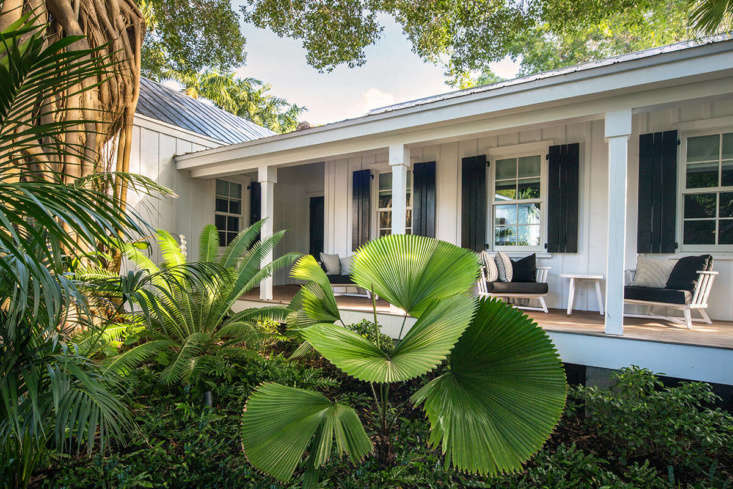Welcome to Key West, where a four-foot-high white picket fence is part of the everyday landscape. By law. “In Old Town, our historic architectural review commission has jurisdiction and you have to do the white picket fence unless they say you can do something else,” says Florida-based landscape architect Craig Reynolds. And why would they?
But if you’re a homeowner (or a landscape architect), cookie-cutter conformity might not be your idea of curb appeal even when a house is designated “historic.” Luckily there’s a design loophole that will allow you to stick out instead of fitting in: It’s called a monster banyan tree.
Photography by Tamara Alvarez, courtesy of Craig Reynolds Landscape Architecture.

For a client who also lives in Denmark, the mandate was to make a new tropical garden and the two new wings that were recently added to either side of the house look as if nothing was new. (Key West architects Bender & Associates gave the new wings peaked roofs, to echo the silhouette of the original gabled roof.)

With a mature banyan tree to work around, Reynolds “really didn’t have to add a lot of extra plants. The tree really made the front garden.” Banyans are epiphytes that begin life in a host tree. As a banyan grows, its aerial roots look as if they’re dripping as they reach down toward the ground.
As for the new picket fence? When Reynolds designed it, “we gave the pickets flat tops as part of our response to the architecture.” As visitors walk through the gate, a brick path leads to the front door; on the left and right are gravel walkways that lead to the back garden and the swimming pool.

Key West’s historic architectural review commission also requires swimming pools to be located on the back half of a property. “They’re trying to control how things look from the street,” says Reynolds.
For a clean, uncluttered look, Reynolds edged the brick path with Mexican river rocks and planted Aglaonema ‘Silver Bay’, with variegated leaves to pick up and reflect the filtered sunlight.


“We crammed in a lot of palms around the pool area because the homeowner wanted it really full—he didn’t want to see a guest cottage that is behind the house,” says Reynolds. “He wanted it very full to look like a jungle; those fronds fall over the pool and you feel like you’re in a river somewhere.”


With palms and other tropical plants strategically sited on the property, the garden appears much larger than its true size. “It’s a typical lot, probably 100 by 100 feet,” says Reynolds.
See more of Reynolds’s work at Key West’s Secret Garden: A Modern Landscape for an Author’s Victorian Cottage. For more design ideas and growing tips for our favorite tropical plants, see our curated guide to Tropicals 101, including:
- Aloe: A Field Guide to Planting, Care & Design
- Architect Visit: Re-creating Old Hawaii on Kakapa Bay
- How to Make an Orchid Bloom Again
- Bougainvillea: A Field Guide to Planting, Care & Design
- 10 Garden Ideas to Steal from Key West












Have a Question or Comment About This Post?
Join the conversation (0)